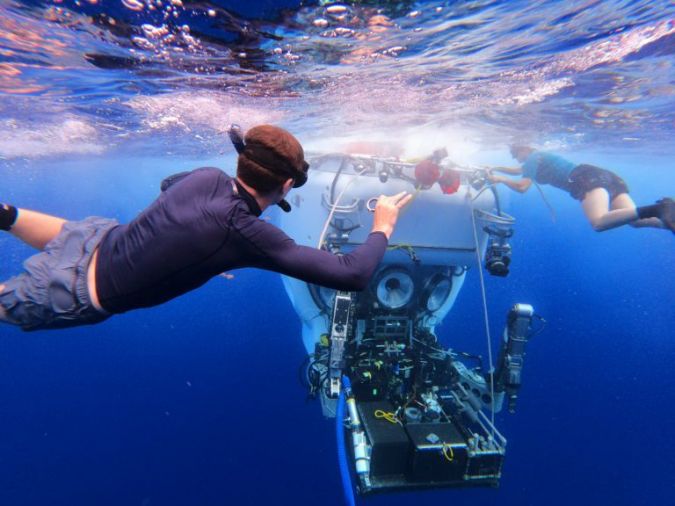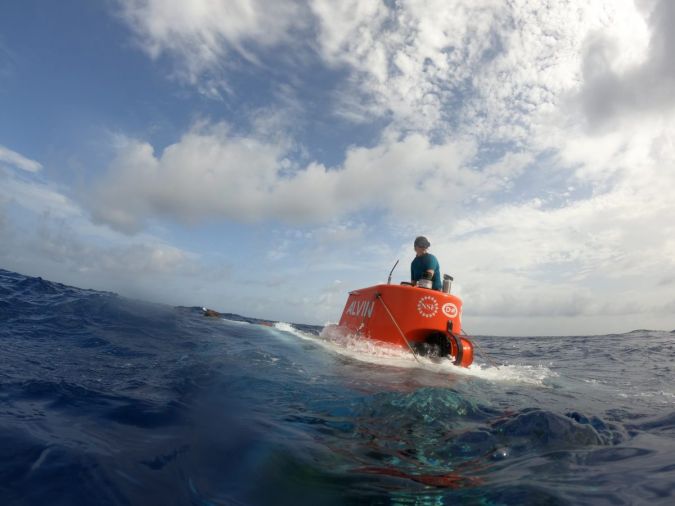Manned Vehicle Alvin Successfully Completes Scientific Validation

manned submersible Alvin With a newly certified maximum depth of 6,500 meters, you’re ready to get back to scientific research. This is the conclusion of a team of scientists who have paced the iconic submarine in the Puerto Rico Trench and Mid Cayman Rise locations over the past three weeks, testing its scientific and engineering systems to ensure it can support the demands. is. Deep sea sampling and data collection.
“We set high goals Alvin Anna Michel, associate scientist at Woods Hole Oceanographic Institution (WHOI) and chief scientist at the National Deep Sea Diving Facility, which operates the facility. Alvin.Alvin Ready for science. ”
Led by Michelle and University of Rhode Island geophysicist Adam Soule Alvins The Scientific Validation Expedition left San Juan, Puerto Rico on July 26 and completed five scientific dives in the Puerto Rico Trench. These dives will support interdisciplinary research, including geological sampling and observations between towering cliffs formed by collisions between tectonic plates in North America and the Caribbean, and biological sampling in deep and deep waters. The focus was on submarine capabilities. Scientists were able to directly observe and collect samples of exposed ocean crust, deep channels carved into the Puerto Rican platform, and seafloor life.
Hydrothermal vents and seepage sites
After stopping by San Juan to exchange scientific researchers, Alvinsupport vessels, research vessels Atlantisheading into an area south of the Cayman Islands known as Cayman Rise, where the two plates are separating at a rate of about 15 millimeters per year. We focused on chemical and biological sampling around hydrothermal vents and seeps, including Beebe Bent Field, the deepest known hydrothermal vent.
Swimmers Matt Skorina (foreground) and Kaitlyn Beardshear) prepare Alvin for post-dive recovery. A skilled diver attaches ropes for him to return the 40,000-pound vehicle to the research vehicle Atlantis after his day of exploration. (Courtesy of Woods Hole Oceanographic Institution)
“These were complex dives in complex locations that challenged not only submarines, but the people who operate submarines and make science possible,” Soule said. “Their skills and recent upgrades to the submarine allowed us to see it in action while making fundamental new discoveries.”
Exploring deep-sea ruins
The upgrade was installed during an overhaul that began in March 2020 and was funded by the National Science Foundation (NSF) based on additional improvements completed in 2014. The latest round of upgrades includes a new titanium ballast ball, an upgraded hydraulic system, new thrusters and motor controllers, an updated command and control and navigation system, and a new 4K imaging system.because Alvin is owned by the U.S. Navy and has since completed three weeks of sea trials in cooperation with the Naval Sea Systems Command (NAVSEA), which oversees the safety of all ships and submarines in the fleet, before officially entering deep water operations. has been certified. Up to 6,500 meters.
in total, Alvin Completed 14 dives during an NSF-funded science validation expedition, spending a total of 102 hours underwater, 53 of which were spent exploring the ocean floor. Previous maximum depth. In addition, the dive allowed 11 scientists to make their first dives. Alvinwhat Michelle said was a deliberate part of the expedition.
“Alvin It is built and maintained to enable new discoveries and provide new insights into how our planet works. Alvin I’ve responded in a way that’s like rewriting a textbook. There is a new generation waiting to use subs and we tell them:Alvin Are you ready, where do you want to go?”
Manned Vehicle (HOV) Alvin on the surface after a dive during a recent scientific validation expedition in the Puerto Rico Trench and Mid Cayman Rise locations in the Atlantic Ocean.













